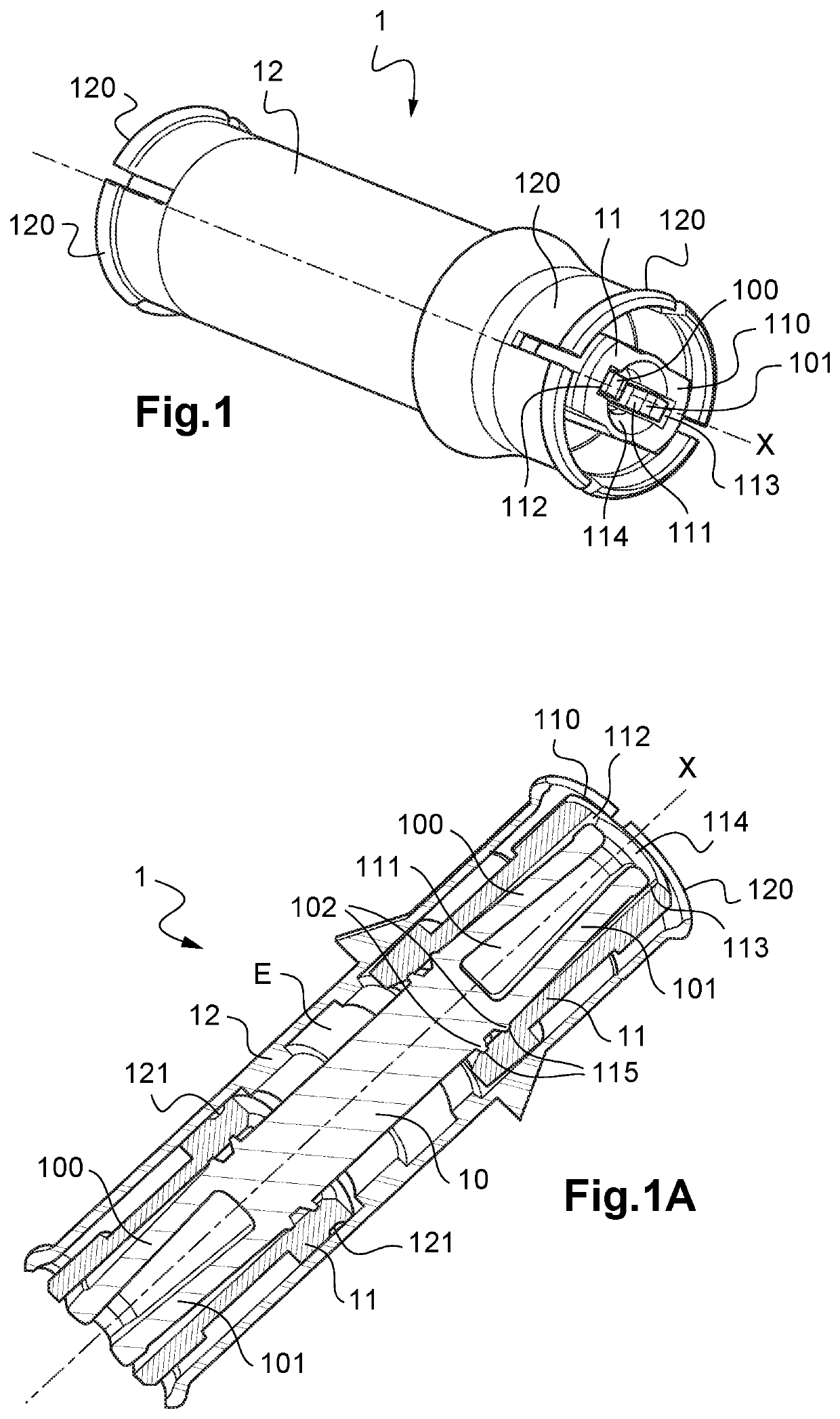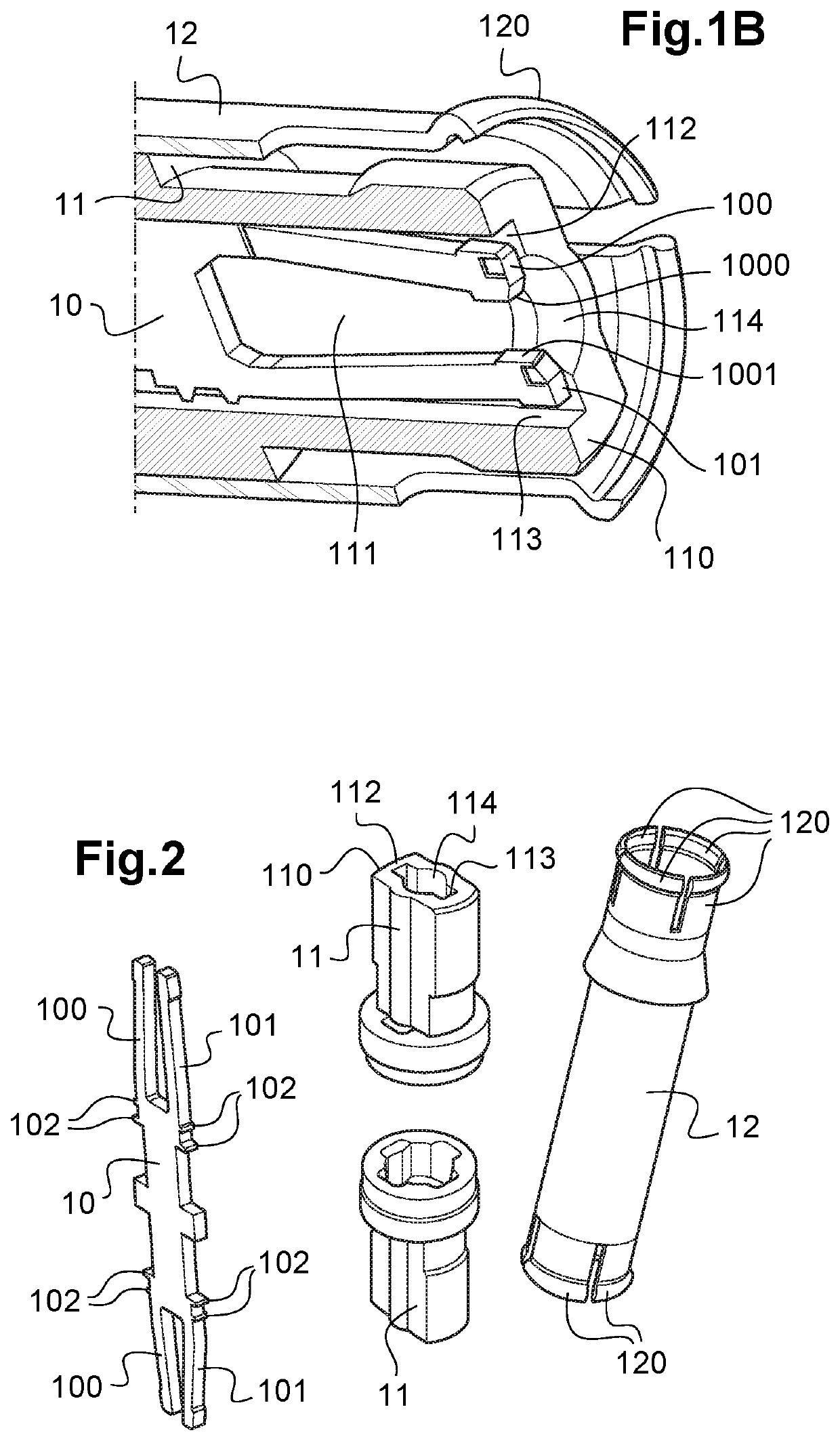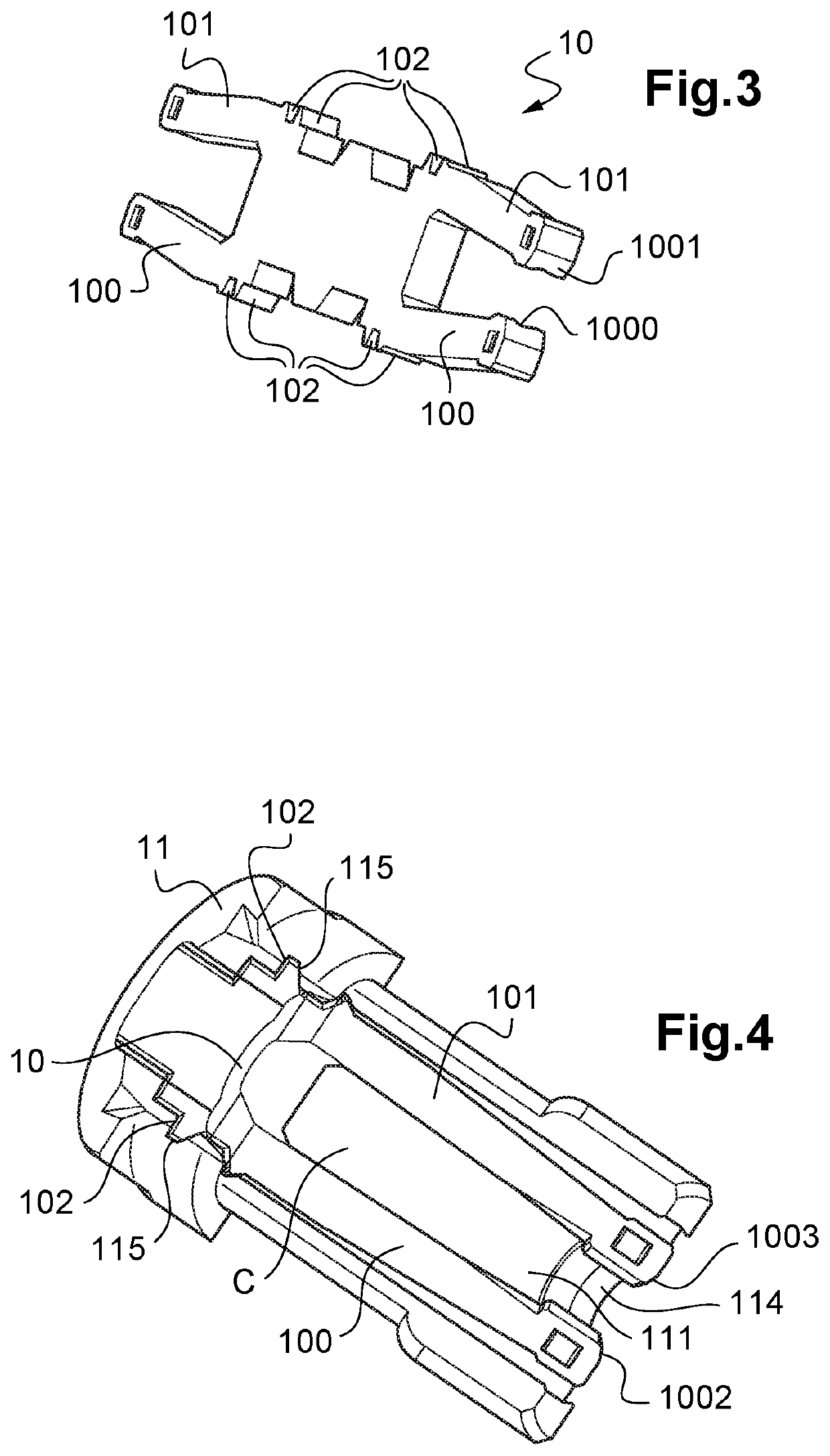A RF connector comprising a flat central contact which end is shaped as a fork to receive the contact pin of a complementary connector and a solid insulating structure configured to guide the contact pin
- Summary
- Abstract
- Description
- Claims
- Application Information
AI Technical Summary
Benefits of technology
Problems solved by technology
Method used
Image
Examples
Embodiment Construction
[0056]Other advantages and features of the invention will become more apparent on reading the detailed description of exemplary implementations of the invention, given as illustrative and non-limiting examples with reference to the following figures in which:
[0057]FIG. 1 is a perspective view of a RF connector according to the invention, forming a coupling connection;
[0058]FIG. 1A is a longitudinal cross-sectional view of the connector according to FIG. 1;
[0059]FIG. 1B is a detail view of one end of the connector according to FIGS. 1 and 1A;
[0060]FIG. 2 shows in perspective views all the components of the RF connector according to FIGS. 1 to 1B;
[0061]FIG. 3 is a perspective view of a flat central contact according to the invention;
[0062]FIG. 4 is a longitudinal cross-sectional view of a variant of a connector according to the invention;
[0063]FIG. 5 is a longitudinal cross-sectional view of an exemplary connection assembly, intended to link two printed circuit boards comprising two r...
PUM
 Login to View More
Login to View More Abstract
Description
Claims
Application Information
 Login to View More
Login to View More - R&D
- Intellectual Property
- Life Sciences
- Materials
- Tech Scout
- Unparalleled Data Quality
- Higher Quality Content
- 60% Fewer Hallucinations
Browse by: Latest US Patents, China's latest patents, Technical Efficacy Thesaurus, Application Domain, Technology Topic, Popular Technical Reports.
© 2025 PatSnap. All rights reserved.Legal|Privacy policy|Modern Slavery Act Transparency Statement|Sitemap|About US| Contact US: help@patsnap.com



